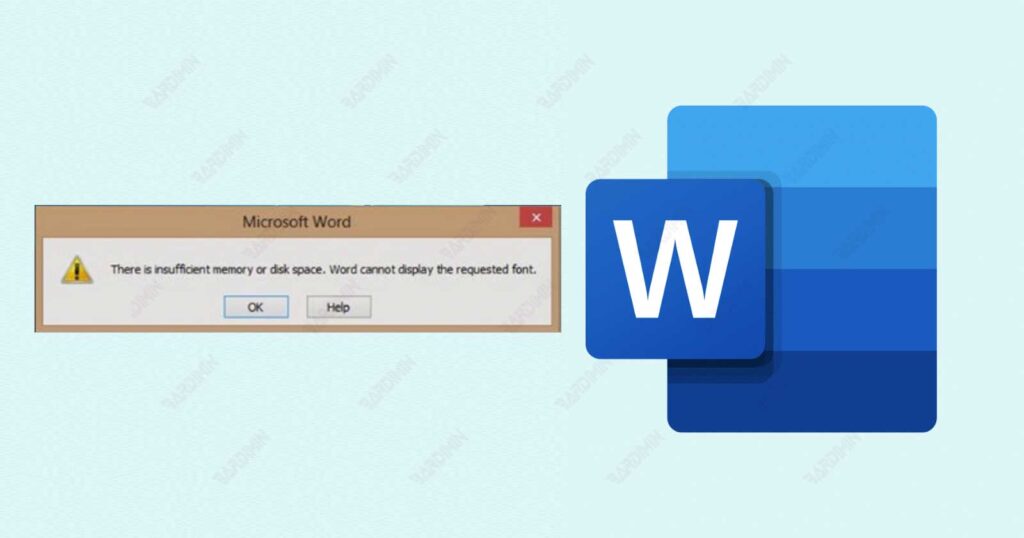Have you ever encountered the error message “There is insufficient memory or disk space” when trying to open or save a Word document? If yes, then you are not alone. Many Word users face this problem, which can be very annoying and hinder your productivity.
This error message shows that something is wrong with your system, be it memory, disk space, or Word settings. There are several causes and solutions to this problem, which I will describe in this article.

What Causes “There is insufficient memory or disk space” in Word?
Several factors can cause this error message to appear, such as:
- Insufficient memory. If your system does not have enough memory to run Word and other applications, then you may encounter this error. Memory is an important resource for running programs, and if none is available, then Word cannot function properly.
- Not enough disk space. If your system does not have enough disk space to store Word documents and other files, then you may encounter this error. Disk space is where files are stored, and if none are available, then Word cannot create or save your document.
- Incorrect Word settings. If your Word settings do not suit your system, then you may encounter this error. For example, if you’re using a version of Word that isn’t compatible with your version of Windows, or if you’re enabling a feature that requires a lot of resources, such as Compatibility Mode or Track Changes.
- Corrupted Word file. If your Word file is corrupted or infected with a virus, then you may encounter this error. A corrupted Word file can cause various problems, such as incorrect formatting, missing content, or errors when opening or saving.
How to Fix “There is insufficient memory or disk space” in Word?
To fix this error message, you need to identify the cause and apply the solution. Here are some solutions you can try:
Solution 1: Check Your Memory and Disk Space
The first step you should do is check if your system has enough memory and disk space to run Word. You can do this in the following ways:
- To check your memory, press Ctrl+Shift+Esc to open Task Manager. Select the Performance tab and look at the Memory section. You’ll see what percentage of memory is being used and how much is available. If the used memory is close to 100%, then you need to close some unnecessary applications or increase your system memory.
- To check your disk space, go to File Explorer and right-click on the drive you want to check. Select Properties and see the General section. You will see how much disk space is being used and how much is available. If the disk space is less than 10%, then you need to delete some unnecessary files or increase your system disk space.
If you have enough memory and disk space, then proceed to the next solution. If not, then try to upgrade both and see if the error message still appears.
Solution 2: Update your Word and Windows
The second step you should take is to make sure that your Word and Windows are updated with the latest versions. The latest version may fix some bugs and issues that might be causing this error message. You can do this in the following ways:
- To update Word, open Word and click File. Select Account and click Update Options. Select Update Now and wait for the process to complete. If no updates are available, then you will see the message You’re up to date!.
- To update Windows, press Windows+I to open Settings. Select Update & Security and click Check for updates. Wait until Windows detects and installs any available updates. You may need to restart your system after the update is complete.
If you’ve already updated your Word and Windows, then move on to the next solution. If not, then try to update both and see if the error message still appears.

